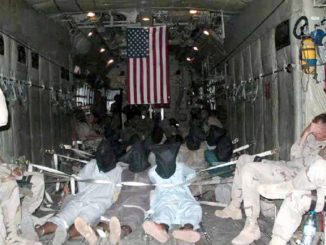
The United States Government has its hands full with protecting our country from terrorism and future terrorist attacks. The four branches of our armed forces do a great job at protecting our future in that regard. There is, however, another protective service that goes unnoticed. It is the US Border Patrol Security.
Founded in 1924, the original US Border Patrol Security team was assembled to be the first line of defense against unauthorized entry into the United States. That role has since expanded to include terrorists and weapons of mass destruction as well as illegal entry and drug smuggling. There are 8000 miles of international border in the US, including Canada and the coastal waters of Florida. This entire span is patrolled with the southwest region having 97% of available resources at any given time.
Although the Mexican border only touches 4 states and is less than half the length of the entire border, it has the most occurrences of attempted entry into the US. One study, done in 1993, states that approximately 6000 people attempted to illegally cross into the US along the same 7 mile stretch of the San Diego border every night. This presents an almost impossible task of the ‘Prevention Through Deterrence’ method that was adopted in 1996. There were 3 phases defined in this initiative.
Phase I was launched in 2 locations; El Paso, Texas and San Diego, California. The plan involved adding more agents and installing stadium lighting, cameras and sensors along the borders. Phase II expanded to border areas in Laredo/McAllen, Texas and Tucson, Arizona. Phase III covered coastal water around Florida and Puerto Rico.
Since 9/11 the Border Patrol Security has re-focused on terrorists trying to cross our borders in remote areas. In March of 2005 Border Patrol Security released a new initiative against terrorists with 5 key areas of improvement:
1. Increase the probability that these infiltrators will be discovered before entering the country between ports of entry.
2. Install current technology to assist the agents.
3. Enforce deterrent policies to the full extent.
4. Better detection practices for people, weapons and drugs.
5. Reduce crime in the nearby communities.
The Border Patrol Security agents continue to fight the battle using the ‘Prevention Through Deterrence’ philosophy while improving such things as response time, strategic intelligence and technology. Statistics show that there is a decline in the attempts to infiltrate the townships and illegal entry has been rerouted to more remote areas. This makes getting into the country far more difficult and gives the Border Patrol Security team additional time to find and apprehend them. It is noted however, since beefing up security at the border there have been more attacks on Border Patrol agents. The numbers reflect an increase of around 700 attacks in 2005 to over 1000 attacks in 2008. Despite those attacks, the attrition rate has leveled off to 10% from a one time high of 18%. And, Border Patrol Security continues to provide their services, to what seems to be a battle in futility, for the safety of our citizens. Once training is complete there are a wide variety of Border Patrol Jobs available to those seeking them.
Proudly WWW.PONIREVO.COM



